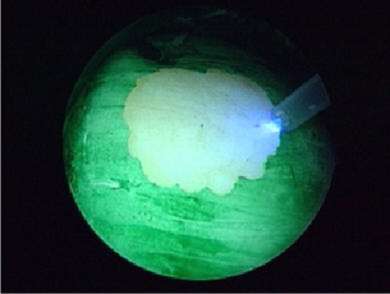Treat and cure early osteoarthosis
Superficial injuries are treated by debridement of the damaged area using mechanical shavers or laser. Mechanical shaver are simple but removes too much of the healthy cartilage. Ordinary lasers are difficult to handle but provide a smooth slippery flat joint surface.
Cartilex method
The answer to the problem of superficial injuries is the patented technique developed by Prof Pierre Ravussin called Cartilex. The tricky laser technique has been made easy with the Cartilex method. It consists first to apply a dye that fixes selectively to the surface of the articular cartilage. The selected dye is non toxic and absorbs the laser light. It is resorbed quickly by the patient’s body.
|
Cartilex méthod has advantages of the shaver (no thermal effect) and of the laser (slippery surface).
|
The Cartilex method is safe and much less dependant of the skill of the operator: the laser beam is used perpendicularly to the cartilage surface instead of a precise narrow angle and also because the much lower energy laser pulse can diffuse safely into the non-coloured cartilage. The improved visibility of the coloured cartilage gives to the surgeon a direct feedback of the effect of the laser pulse to the cartilage that makes the Cartilex technique easy to use (see video).
1cm2 area smoothed in ~ 1 minute.
 Click on the picture to play the video
Click on the picture to play the video
Success
The thoroughbred stallion Cominols, suffered from mild osteoarthritis and ulceration of the cartilage in his left front fetlock. The horse has supported the laser resurfacing and debridement of the ulcer performed by Dr. vet Theo Tschanz , veterinary surgeon at the equine clinic Neugraben SA in August 2014.
According to the official newsletter of the races and Livestock No. 19 of August 24, 2015, "Cominols" won the race "Weltmeisterschaftslauf Fegentri 1600 m in Dielsdorf near Zurich, Switzerland, one year after Cartilex treatment.